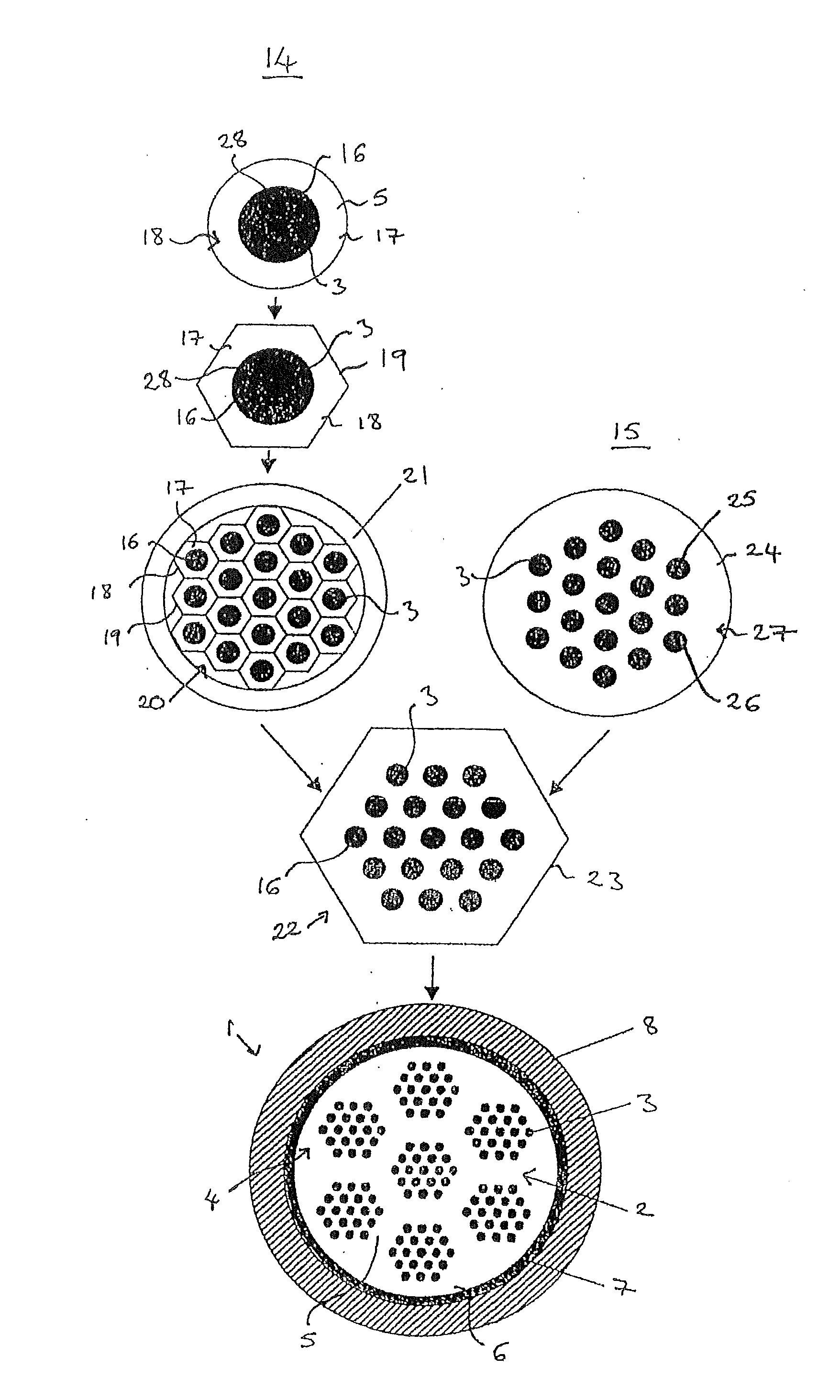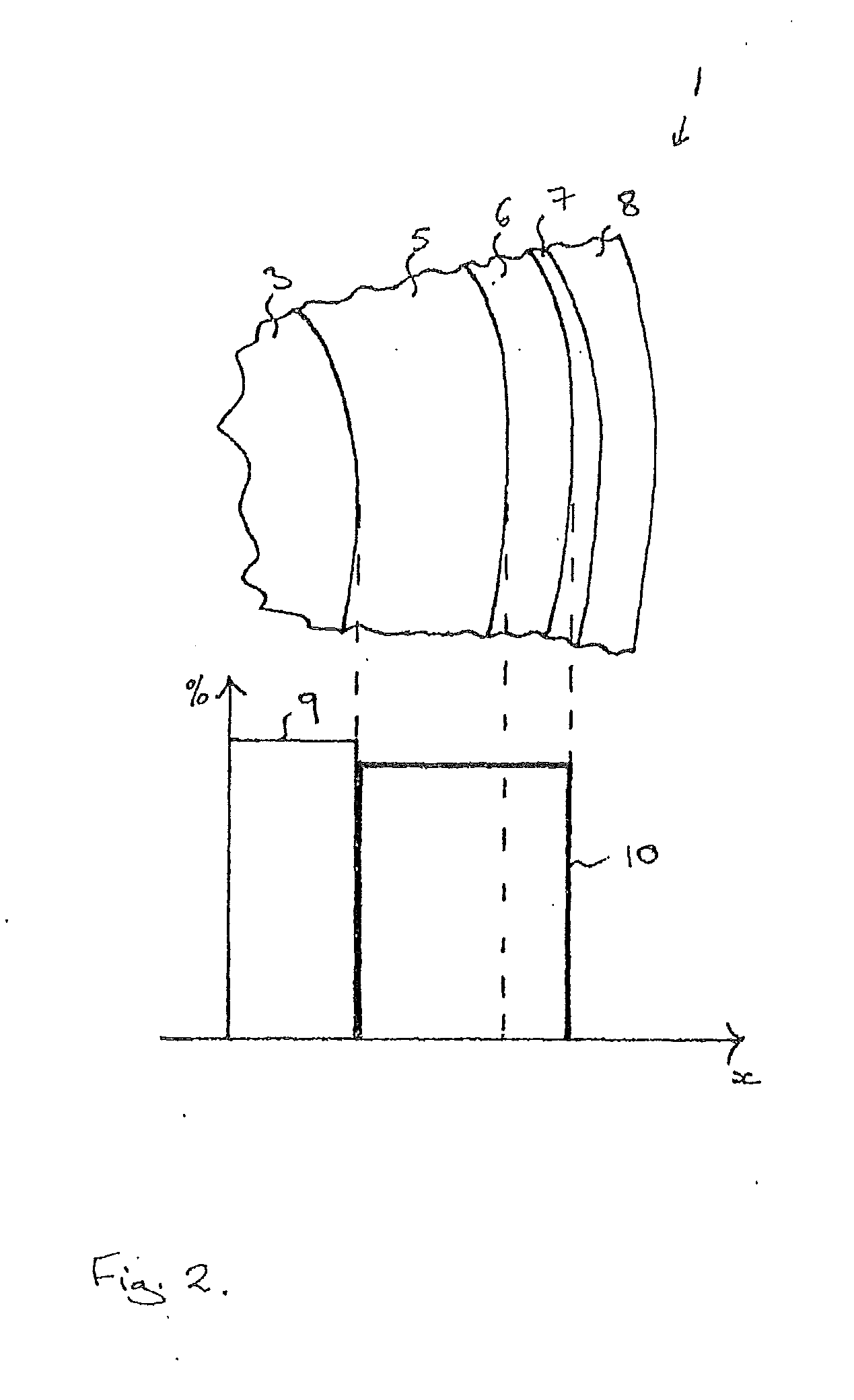Superconducting composite, preliminary product of superconducting composite and method for producing same
a superconducting composite and composite technology, applied in the direction of superconductors/hyperconductors, superconducting magnets/coils, superconductors/hyperconductors, etc., can solve the problems of high equipment and cooling costs, difficult to produce large conductor strands with homogenous conductor properties for power engineering by means of classic wire manufacturing methods, and low or no ability to be shaped using classic shaping methods. , to achieve the effect of reducing th
- Summary
- Abstract
- Description
- Claims
- Application Information
AI Technical Summary
Benefits of technology
Problems solved by technology
Method used
Image
Examples
Embodiment Construction
[0040]In certain embodiments, the first casing and the second casing cannot be easily recognized as separate parts inside the composite, e.g., if the materials of the two casings are welded to one another following shaping. Also, the materials of the two casings may fuse due to the heat treatment, so that a boundary between the two cannot be recognized in a microsection, for example.
[0041]In this exemplary embodiment, at least a portion of the inner area of the first casing surrounds the respective filaments made of MgB2. The inner area may be comprised of one single area that continuously surrounds the filaments. Alternatively, the inner area may feature several subareas that are separated from one another. In the first exemplary embodiment the outer area of the first casing may include separate areas between the filaments and the inner area may consist of one single area. In a second exemplary embodiment, several ring-shaped inner areas are surrounded by ring-shaped outer areas.
[0...
PUM
| Property | Measurement | Unit |
|---|---|---|
| transition temperature | aaaaa | aaaaa |
| Tc | aaaaa | aaaaa |
| Tc | aaaaa | aaaaa |
Abstract
Description
Claims
Application Information
 Login to View More
Login to View More - R&D
- Intellectual Property
- Life Sciences
- Materials
- Tech Scout
- Unparalleled Data Quality
- Higher Quality Content
- 60% Fewer Hallucinations
Browse by: Latest US Patents, China's latest patents, Technical Efficacy Thesaurus, Application Domain, Technology Topic, Popular Technical Reports.
© 2025 PatSnap. All rights reserved.Legal|Privacy policy|Modern Slavery Act Transparency Statement|Sitemap|About US| Contact US: help@patsnap.com



